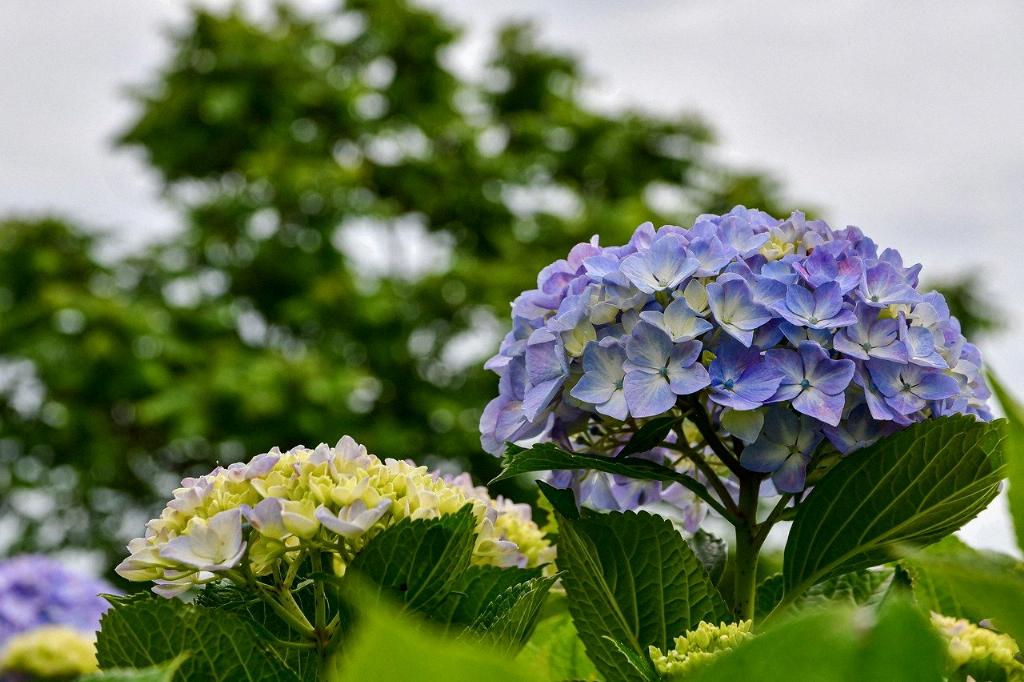Hydrangeas are beloved for their stunning blooms, but sometimes they just don’t seem to produce any flowers, leaving gardeners puzzled and disappointed. There are several key factors that could be contributing to your hydrangea’s lack of blooms, and understanding these reasons can help you troubleshoot and remedy the situation.
1. Incorrect Pruning Techniques
One of the most common reasons why hydrangeas fail to bloom is incorrect pruning. Hydrangeas can bloom on old wood, new wood, or both, depending on the variety. Pruning at the wrong time or cutting off flower buds can prevent your hydrangea from blooming. Make sure you know the specific pruning requirements for your hydrangea variety and follow them carefully.
2. Winter and Spring Weather
Bud damage caused by harsh winter conditions or early spring frosts can also inhibit blooming. Extreme cold can kill flower buds, preventing them from developing into blooms. Consider protecting your hydrangeas during cold spells with coverings to safeguard the flower buds.
3. Location Matters
The location of your hydrangea plant can also impact its blooming potential. Hydrangeas typically prefer a spot with morning sun and afternoon shade. If your hydrangea is not receiving enough sunlight, it may not bloom as abundantly. Similarly, excessive shade can also hinder blooming, so ensure your plant is situated in an appropriate location.
4. Fertilizer Overload
While fertilizer is essential for plant growth, too much of a good thing can be detrimental. Excessive fertilizer, especially high-nitrogen formulas, can promote lush foliage at the expense of blooms. Be mindful of the type and amount of fertilizer you use on your hydrangeas to avoid inadvertently hindering blooming.
5. Soil pH Levels
The pH level of the soil can also affect hydrangea blooming. For pink blooms, a more alkaline soil is needed, while blue blooms thrive in acidic soil. Testing your soil and adjusting the pH can help encourage blooming in hydrangeas by providing the ideal conditions for flower production.
6. Lack of Adequate Watering
Hydrangeas require consistent moisture to bloom well. Insufficient watering, especially during hot and dry periods, can stress the plant and lead to reduced blooming. Maintain a regular watering schedule, ensuring the soil stays evenly moist but not waterlogged, to support healthy blooming.
7. Varietal Differences
It’s essential to recognize that different hydrangea varieties have varying blooming habits. Some varieties bloom on old wood from the previous year, while others bloom on new wood from the current season. Understanding your hydrangea’s blooming cycle can help you care for it correctly and maximize blooming potential.
8. Pests and Disease
Pests and diseases can also impact hydrangea blooming. Insect infestations or fungal infections can stress the plant and divert its energy away from flower production. Keep an eye out for any signs of pest damage or disease, and take prompt action to address these issues and promote blooming.
9. Pruning Frequency
While pruning is necessary for maintaining plant health, excessive or unnecessary pruning can reduce blooming. Avoid over-pruning your hydrangea and only remove dead or damaged growth. Prune according to the specific requirements of your hydrangea variety to avoid inadvertently hindering blooming.
10. Timing of Pruning
Pruning at the wrong time can disrupt the blooming cycle of hydrangeas. For varieties that bloom on old wood, pruning in late summer or fall can remove potential flower buds. Conversely, for types that bloom on new wood, winter or early spring pruning can also inhibit blooming. Research the best time to prune your specific hydrangea variety to ensure optimal blooming.
11. Patience and Consistency
Finally, remember that some hydrangeas may take time to establish before blooming abundantly. Patience is key, as consistent care and proper maintenance practices will ultimately lead to more prolific blooming. Maintain a regular care routine, address any issues promptly, and your hydrangea should reward you with beautiful blooms in due time.
12. Conclusion
In conclusion, a myriad of factors can contribute to why your hydrangea may not be blooming. By examining potential issues such as improper pruning, weather damage, location, fertilization, soil pH, watering, varietal differences, pest and disease challenges, pruning practices, and timing, you can identify the root cause and take appropriate corrective actions to encourage blooming. With attention to detail, patience, and consistent care, you can help your hydrangea reach its full blooming potential and enjoy a spectacular floral display in your garden.

